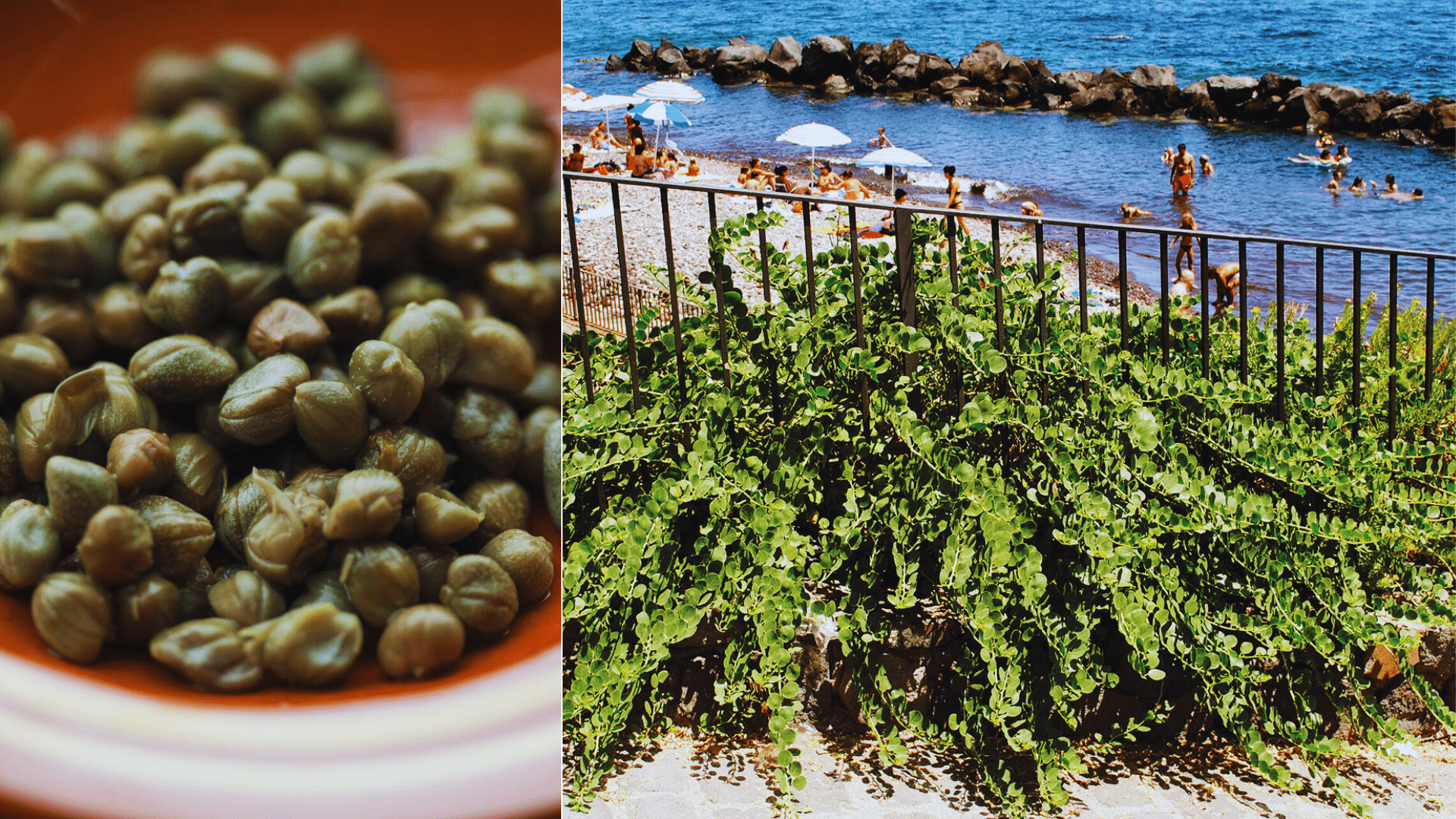Introduction to Capers
Capers are the unripe green flower buds of the Capparis spinosa plant, a key ingredient in Mediterranean cuisine. These buds are picked before they bloom, then dried and preserved, often in brine, vinegar, or salt. This process enhances their distinctive tangy, lemony flavor, adding a unique zest to dishes such as salads, pasta, and fish. Originating from the region, capers have been a part of Cypriot, Italian, Aeolian Greek, and Maltese food traditions for centuries. The term “caper” traces back to the Latin word “capparis,” borrowed from the Greek “kápparis,” likely referring to its prevalence on the island of Cyprus.
The Origin of Capers

Capers, often enjoyed for their tangy flavor in various cuisines, have a rich history that dates back thousands of years. Originating from the arid regions of western and central Asia, capers have been used in culinary and medicinal contexts for millennia. They are mentioned in the Sumerian Epic of Gilgamesh, indicating their significance in Mesopotamia over 4,000 years ago. Historically, capers grew mainly along the Mediterranean, primarily in Spain and Italy, suggesting a movement from Asia towards the Mediterranean regions. The caper plant, technically named Capparis Spinosa, is typical of the southern Mediterranean area, thriving in the specific conditions found on islands such as Pantelleria, situated between Sicily and Africa.
Nutritional Value
Vitamins
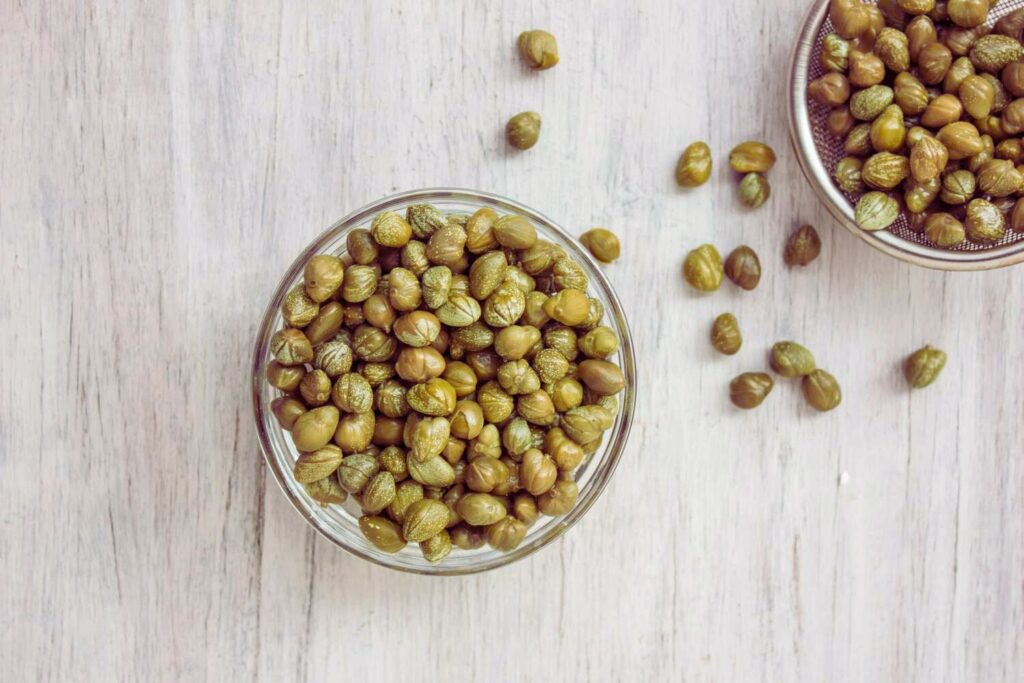
Capers are not just a flavorful addition to dishes; they are also packed with essential nutrients. While low in calories, capers offer a modest amount of vitamins and minerals. One tablespoon of drained capers contains about 2 calories and provides a small amount of Vitamin A and Vitamin E, which are crucial for maintaining good health. Capers also contain Vitamin K, with 6.9 micrograms per serving, accounting for approximately 9 percent of the daily value. This vitamin plays a vital role in blood clotting and bone health. In addition to these vitamins, capers are a source of several other nutrients including manganese, niacin, and calcium, further contributing to their overall nutritional value.
Minerals
Capers, besides being low in calories, offer a significant amount of minerals that are essential for health. Notably, they are a good source of sodium, providing 9% of the Daily Value (DV) per serving, which is important for maintaining electrolyte balance in the body, though it’s wise to consume them in moderation due to their high sodium content. Capers also contain copper, an essential mineral for maintaining healthy blood vessels, nerves, immune systems, and bones. Additionally, they provide calcium, crucial for bone health, and manganese, which supports metabolism, bone formation, and the body’s ability to fight off free radicals.
How Are Capers Used?
In Cooking
Capers are versatile ingredients used in a variety of dishes to add a burst of flavor. Here are some ways they’re utilized in cooking:
- Pan Frying: Drain, dry, and pan fry capers in oil until they stop popping, then add them to dishes with minced garlic and pepper flakes for added flavor.
- In Recipes: Capers are incorporated into many recipes, such as salads, pasta dishes, and sauces. They add a salty and tangy flavor that can elevate the overall taste of a dish.
Capers are a great way to add depth and a distinctive taste to your cooking, making them a staple for many chefs and home cooks alike.
Mediterranean Cuisine

In Mediterranean cuisine, capers are celebrated for their tangy, lemony, and slightly floral flavor, making them a versatile ingredient. Here’s how they’re commonly used:
- Sauces: Capers are often added to sauces to introduce a burst of flavor. They’re particularly common in lemony, buttery, and garlicky sauces, enhancing dishes with chicken or salmon.
- Salads: Their tangy nature complements salads, adding a briny depth to the overall taste.
- Pasta and Pizza: Capers can be sprinkled over pasta and pizza for an extra zing.
- Fish Dishes: Integral to many fish recipes, capers pair well with seafood, providing a counterbalance to the richness of fish like salmon.
- Dressings and Mayonnaise: Chopped capers can be mixed into dressings and mayonnaise, along with ingredients like chopped shallots, yogurt, and white wine vinegar, to create a flavorful condiment for sandwiches or salads.
Capers add a distinctive touch to many dishes within Mediterranean cooking, enhancing flavors with their unique, piquant taste.
Garnishing and Flavoring
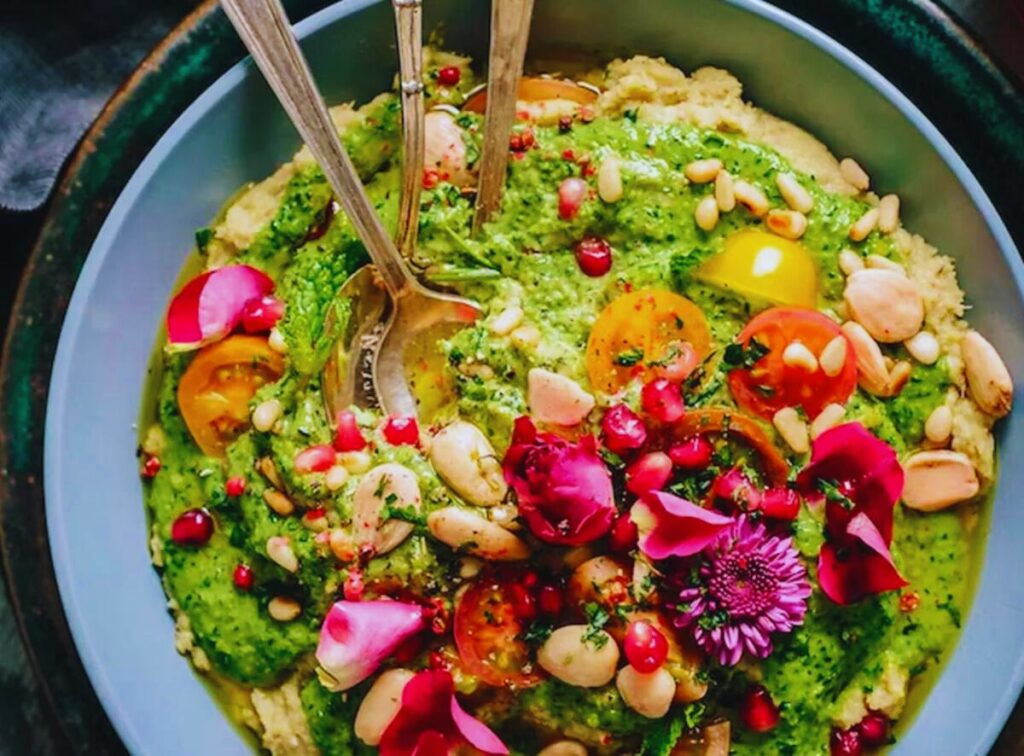
Capers, known for their tangy and salty flavor, are a versatile ingredient used for both garnishing and flavoring in various cuisines. Here’s how they are commonly used:
- Sauces and Dressings: Enhance sauces and dressings with capers for an extra burst of flavor. They pair well with citrus, tomato, and olive oil-based dressings.
- Seafood Dishes: Capers are a classic addition to fish dishes, such as salmon, for their ability to complement the seafood’s natural flavors.
- Meat Recipes: Incorporate capers into meat recipes like veal ragu to add a complex bitter flavor that enhances the overall taste.
- Vegetarian Options: Capers bond well with vegetables like eggplant, adding depth and a touch of brininess to vegetarian dishes.
- Garnishing: Use capers as a garnish on salads, pizzas, or pasta to introduce texture and a salty punch.
Capers are a small but mighty ingredient that can significantly impact the flavor profile of a dish, making them a staple in culinary arts for garnishing and flavoring.
Health Benefits
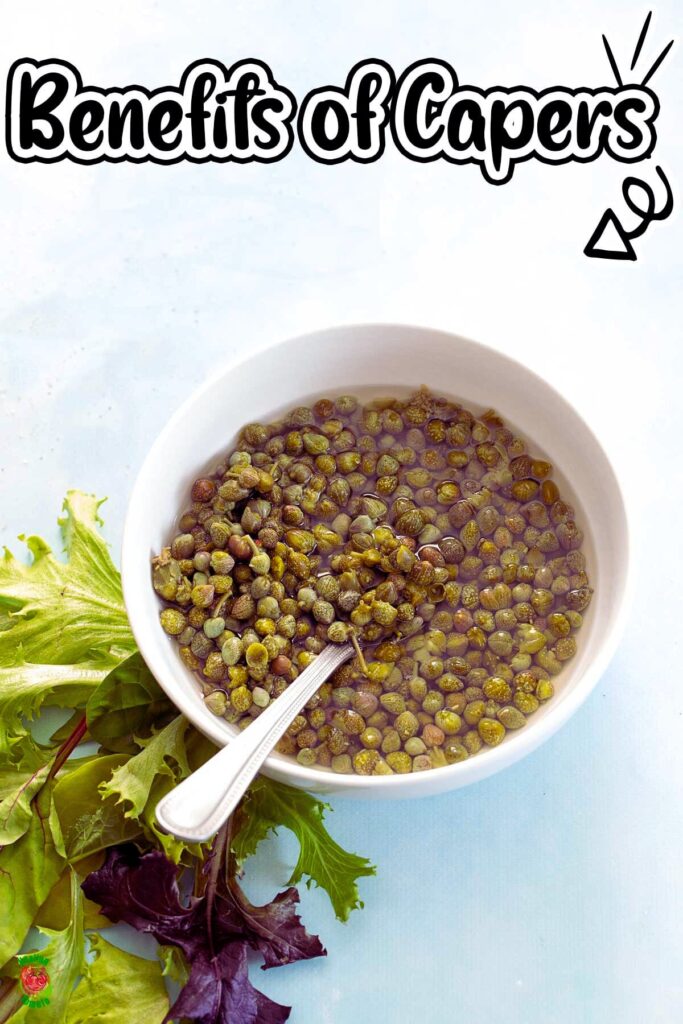
Antioxidant Properties
Capers often enjoyed for their unique flavor in Mediterranean cuisine, also offer significant health benefits, particularly due to their antioxidant properties:
- Antioxidants Content: Capers are rich in antioxidants like quercetin and rutin, which are crucial in reducing oxidative stress in the body. This reduction in oxidative stress may help lower the risk of certain cancers.
- Support for Chronic Disease Prevention: The antioxidants found in capers can help protect cells against oxidative damage. This protection aids in reducing inflammation and potentially prevents chronic diseases.
- Additional Health Benefits: Beyond their antioxidant capacity, capers have shown potential in displaying antibacterial, antifungal, analgesic (pain-relieving), antitumor, hepatoprotective (liver-protecting), anti-inflammatory, and antidiabetic properties, thanks to their rich phytochemical profile.
- Nutritional Benefits: Capers are a good source of copper and vitamin K, supporting bone health and metabolic processes. A quarter-cup serving provides substantial daily needs for these nutrients.
These characteristics not only make capers a flavorful addition to dishes but also a beneficial one for overall health.
Anti-inflammatory Effects
Capers exhibit significant anti-inflammatory effects, offering various health benefits:
- Reduction of Inflammatory Mediators: Research indicates that capers can reduce brain inflammation through an increase in anti-inflammatory mediators like IL-10 and a decrease in inflammatory mediators such as TNF-α and IL-1β.
- General Health Benefits: Capers have been associated with several health benefits, including reducing inflammation, enhancing liver health, and stabilizing blood sugar levels. These effects contribute to the overall anti-inflammatory potential of capers.
These properties make capers a beneficial addition to diets, especially for individuals looking to mitigate inflammation and its associated health risks.
Varieties of Capers
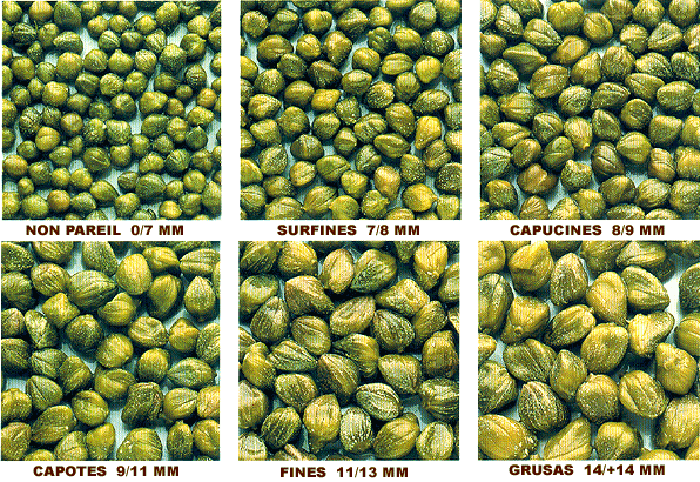
Size and Flavor Differences
Capers are classified into different varieties based on their size, each offering unique flavor profiles:
- Nonpareils are the smallest and most popular variety, about 1/4-inch-wide (7mm in diameter), prized for their delicate texture and flavor.
- Capucines are medium-sized capers, known for their more pronounced tangy and briny flavor compared to nonpareils.
- Capotes are the largest variety, offering a more robust and pungent taste.
- Surfines, Fines, and Grusas are other categories that fall in between these sizes, each having slight variations in taste and texture. The general rule is: the smaller the caper, the milder its flavor, and vice versa.
Many experts favor dry-salted capers for their superior flavor and texture, highlighting their floral and citrusy undertones.
Popular Types
Capers are classified by size, with each size offering a unique flavor profile and culinary application. The most common varieties include:
- Non-pareil (up to 7 mm): The most popular and smallest variety, favored for its delicate texture and flavor.
- Surfines (7-8 mm): Slightly larger than non-pareil, surfines are also highly regarded for their quality.
- Capucines (8-9 mm): These offer a good balance of size and flavor, making them versatile in cooking.
- Capotes (9-11 mm): Larger still, capotes are used when a more pronounced caper presence is desired in dishes.
- Fines (11-13 mm) and Grusas (14 and over mm): These larger sizes are less common but can be used for a bold caper flavor in recipes.
Smaller capers tend to be more desirable due to their delicate flavor, with non-pareil being the most sought-after. As capers increase in size, they become more acidic and assertive in taste.
How to Select and Store
Buying Tips
When selecting and storing capers, follow these guidelines to ensure quality and longevity:
- Selection: Look for capers that are tightly packed in the jar, preferably preserved in brine or salt as these are the most common and effective methods for maintaining their flavor and texture.
- Storage Methods: After opening, transfer capers to an airtight container and ensure they are covered with their brine or a bit of olive oil to keep them fresh. Store them in the refrigerator to extend their shelf life. For unopened jars, simply keep them in a cool, dry place away from direct sunlight.
- Preservation Methods for Fresh Capers: If you happen to have fresh capers, consider preserving them through brining, curing, or pickling. These methods not only extend their shelf life but can also enhance their flavor profile.
Storage Recommendations
To ensure capers remain fresh and flavorful, follow these guidelines for selection and storage:
- Selecting Capers: Look for capers that are firm and tightly closed. The color should be greenish-grey.
- Storing Unopened Capers: Store unopened jars or bottles of capers in a cool, dark place like a pantry. There is no need to refrigerate them at this stage.
- After Opening: Once opened, transfer capers to an airtight container if they’re not already in one. Make sure they are fully submerged in their original brine to maintain freshness. Then, refrigerate them.
- Brined vs. Salt-Packed Capers: Brined capers should be kept refrigerated and will last about 1 year. Salt-packed capers, which some prefer for their taste, do not necessarily need refrigeration but should be kept in a cool, dry place. Both types benefit from being stored in an airtight container.
- Longevity and Safety: Even beyond the expiration date, capers can remain safe to consume if they have been stored properly and show no signs of spoilage, such as off odors or cloudiness in the brine.
incorporating Capers into Your Diet
Recipes and Ideas
Capers, with their unique, briny flavor, can elevate various dishes. Here are some ideas to incorporate them into your diet:
- Pasta Dishes: Add capers to pasta sauces, especially in puttanesca or alongside olive oil and garlic for a simple, flavorful dish.
- Fish Recipes: Capers pair wonderfully with fish. Try them in recipes for salmon, cod, or as part of a sauce for grilled fish.
- Salads: Sprinkle capers over salads for a burst of flavor. They work well in potato salads, green salads, or pasta salads.
- Chicken Piccata: This classic dish uses capers in a lemony sauce over pan-fried chicken breasts.
- Bruschetta: Enhance tomato bruschetta with capers and olives for a salty, briny addition.
- Sauces and Dressings: Incorporate capers into tartar sauce, remoulade, or salad dressings for extra zing.
For detailed recipes and more ideas, these sources offer a variety of caper-incorporated dishes:
Conclusion
Capers may be small, but they’re mighty in flavor and nutrition. Whether you’re a seasoned chef or just starting to explore the kitchen, these little buds can add a big impact to your cooking. From their historical roots in the Mediterranean to their place in modern kitchens around the globe, capers are a versatile ingredient worth incorporating into your culinary repertoire.
Read also: What is Pegging?
FAQs
Q. Can capers be eaten raw?
Yes, capers can be eaten raw and are often consumed this way in salads and as garnishes.
Q. Are capers and caperberries the same?
No, capers are the unripe flower buds of the Capparis spinosa plant, while caperberries are the fruit that the plant produces after the flowers have been pollinated.
Q. How do I reduce the saltiness of capers?
To reduce their saltiness, rinse capers under cold water or soak them in fresh water for a few minutes before using.
Q. Can capers go bad?
Yes, like any food product, capers can spoil, especially if not stored properly. Always check for signs of spoilage, such as an off smell or mold, before using.
Q. Are capers good for weight loss?
Capers are low in calories and high in nutrients, making them a healthy addition to a weight-loss diet. However, they should be consumed in moderation due to their high sodium content.
